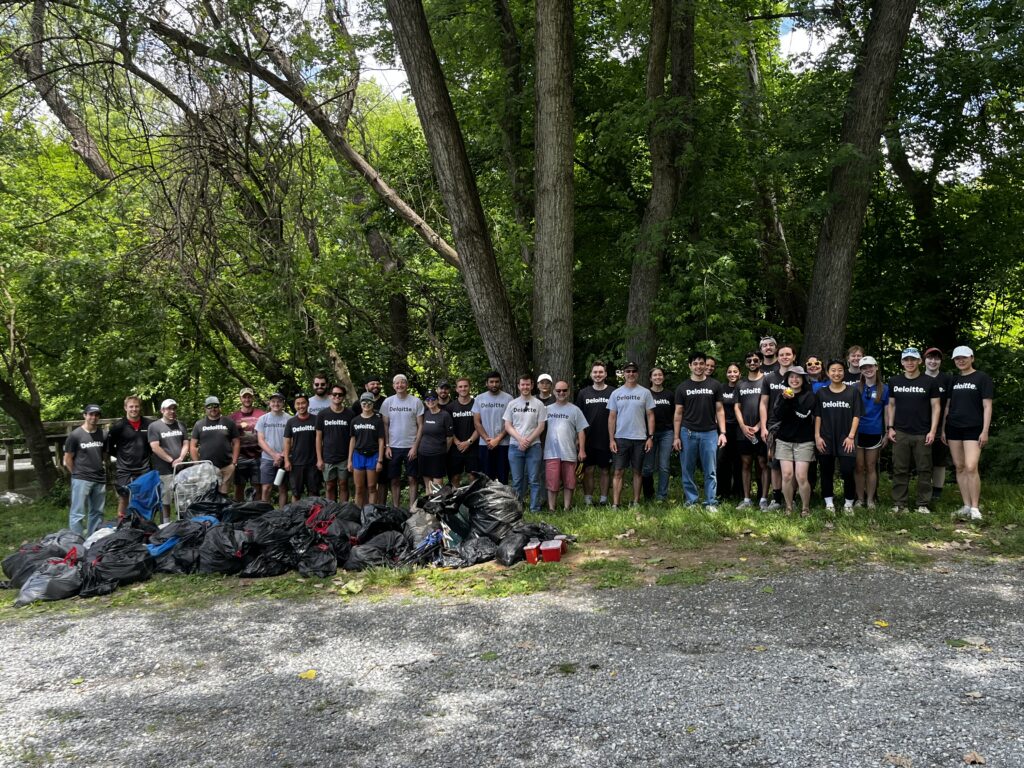 Photo by Trust Staff
Photo by Trust Staff
Read More
 Photo by Trust Staff
Photo by Trust Staff
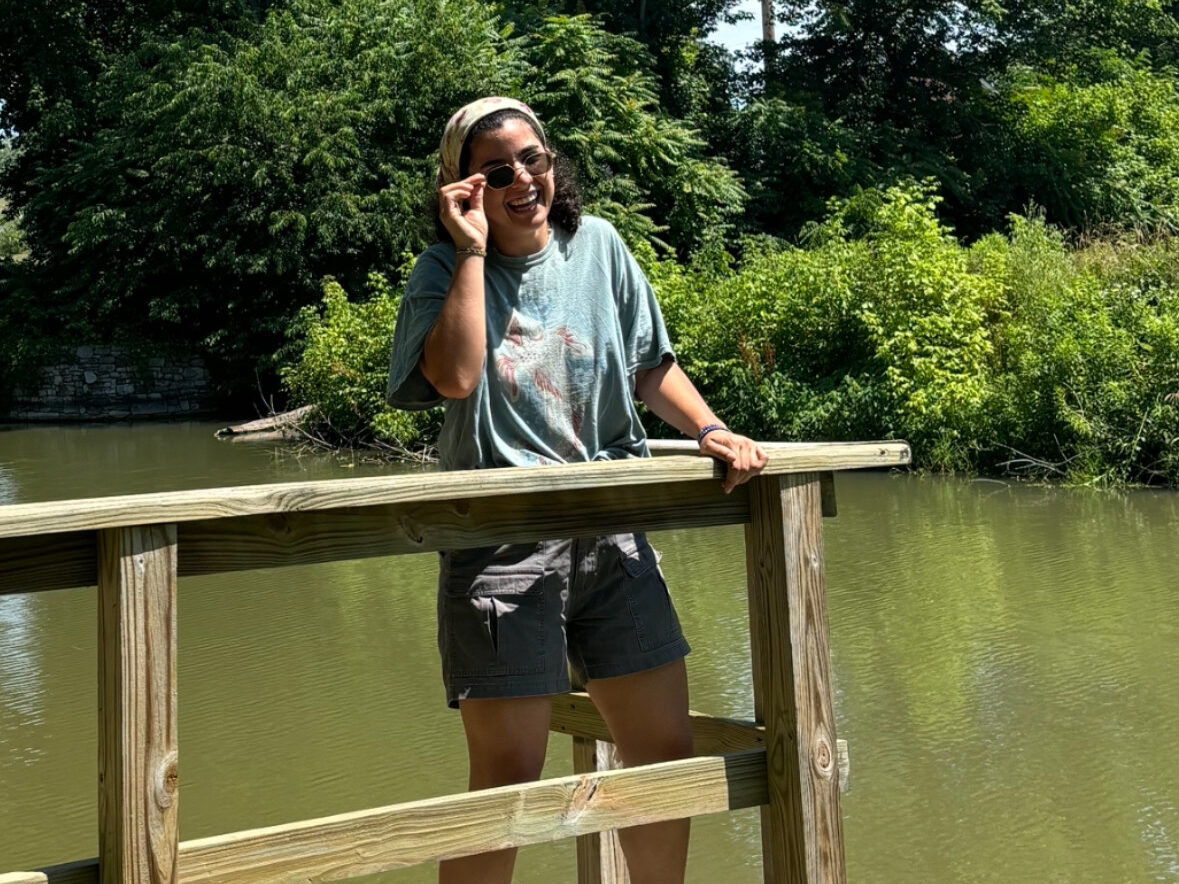
Celebrate your love for the C&O Canal by sharing your personal story about the Park. Each story will take a look at a person’s relationship with the C&O Canal. Whether an NPS ranger, a volunteer, or a visitor, everyone has a story to tell about the canal! If you want to share your story, fill out the form below, email it to us at [email protected] or post it on your social media feeds with the hashtag #MyCanalStory. We could use your story here on our website!
During National Preservation Month, Trust President & CEO Lauren Riviello joined Preservation Maryland’s PreserveCast to discuss activating historic resources. With topics ranging from how she came to work with non-profits to the C&O Canal Trust’s award-winning Canal Quarters interpretive program, this is an episode you don’t want to miss.


Celebrate your love for the C&O Canal by sharing your personal story about the Park. Each story will take a look at a person’s relationship with the C&O Canal. Whether an NPS ranger, a volunteer, or a visitor, everyone has a story to tell about the canal! If you want to share your story, fill out the form below, email it to us at [email protected] or post it on your social media feeds with the hashtag #MyCanalStory. We could use your story here on our website!
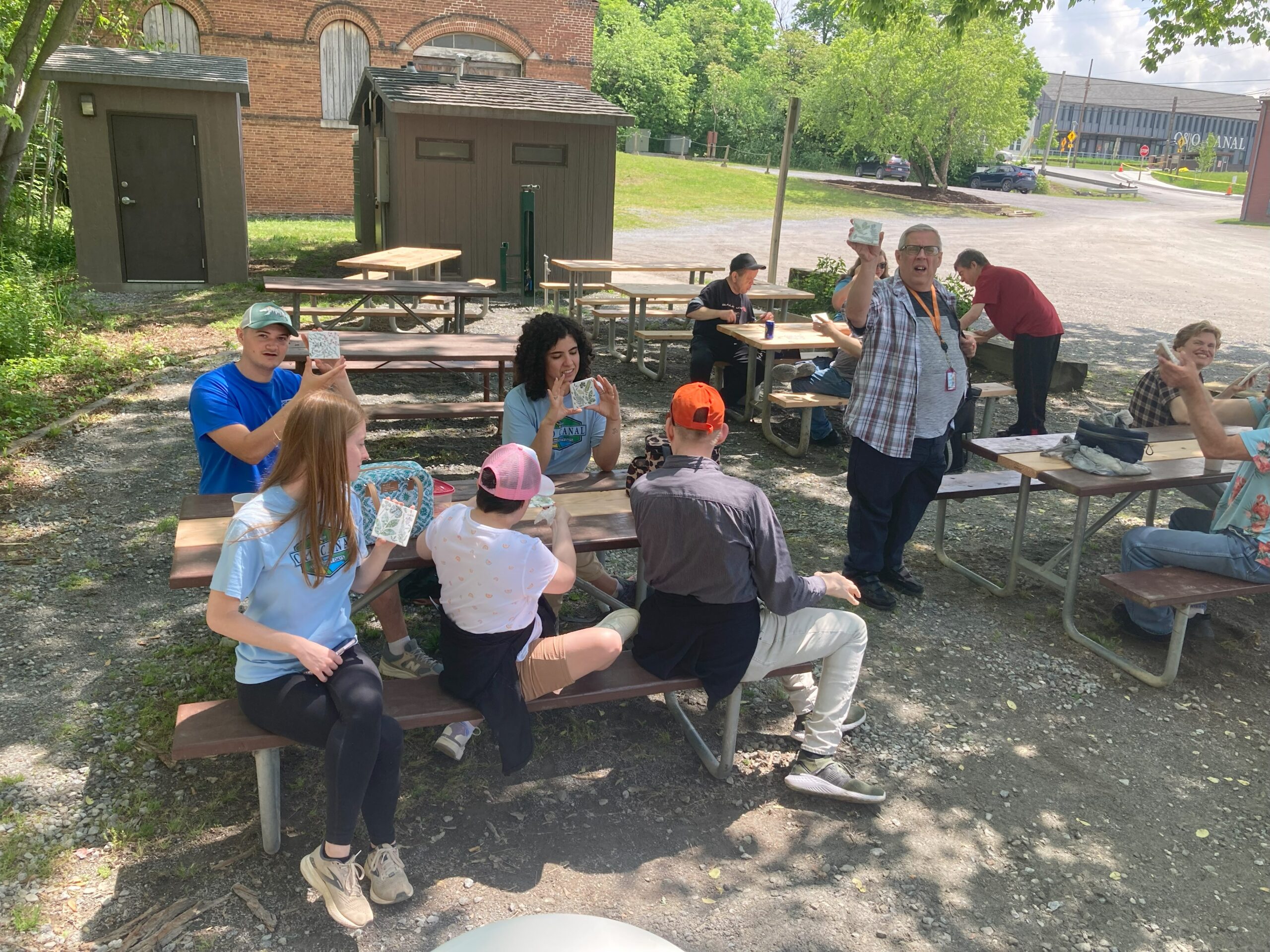
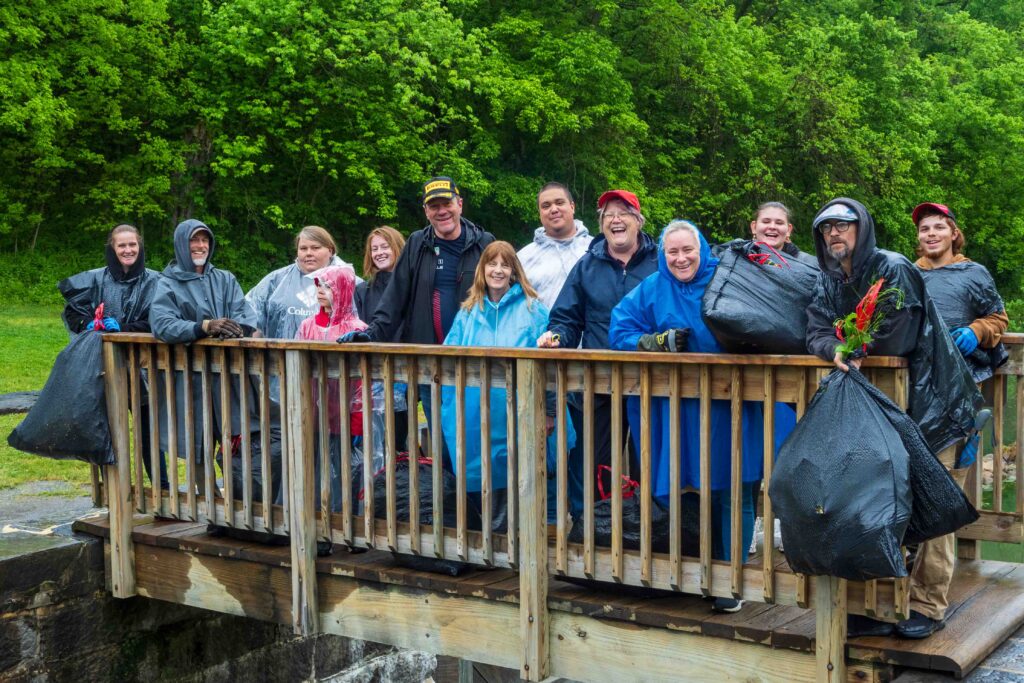 Photo by Francis Grant-Suttie
Photo by Francis Grant-Suttie
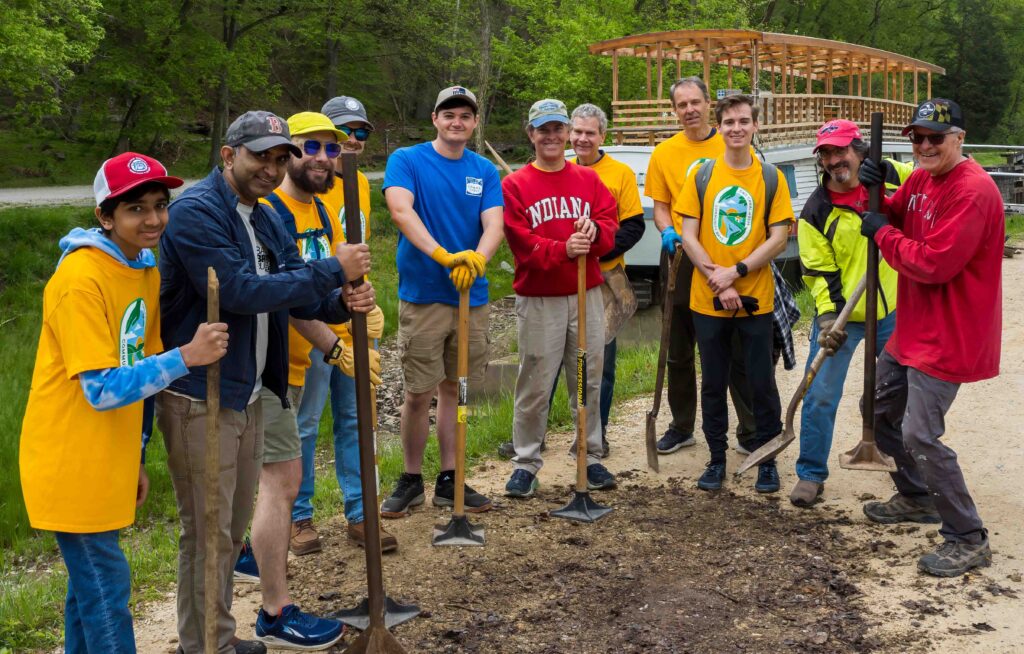 Photo by Francis Grant-Suttie
Photo by Francis Grant-Suttie
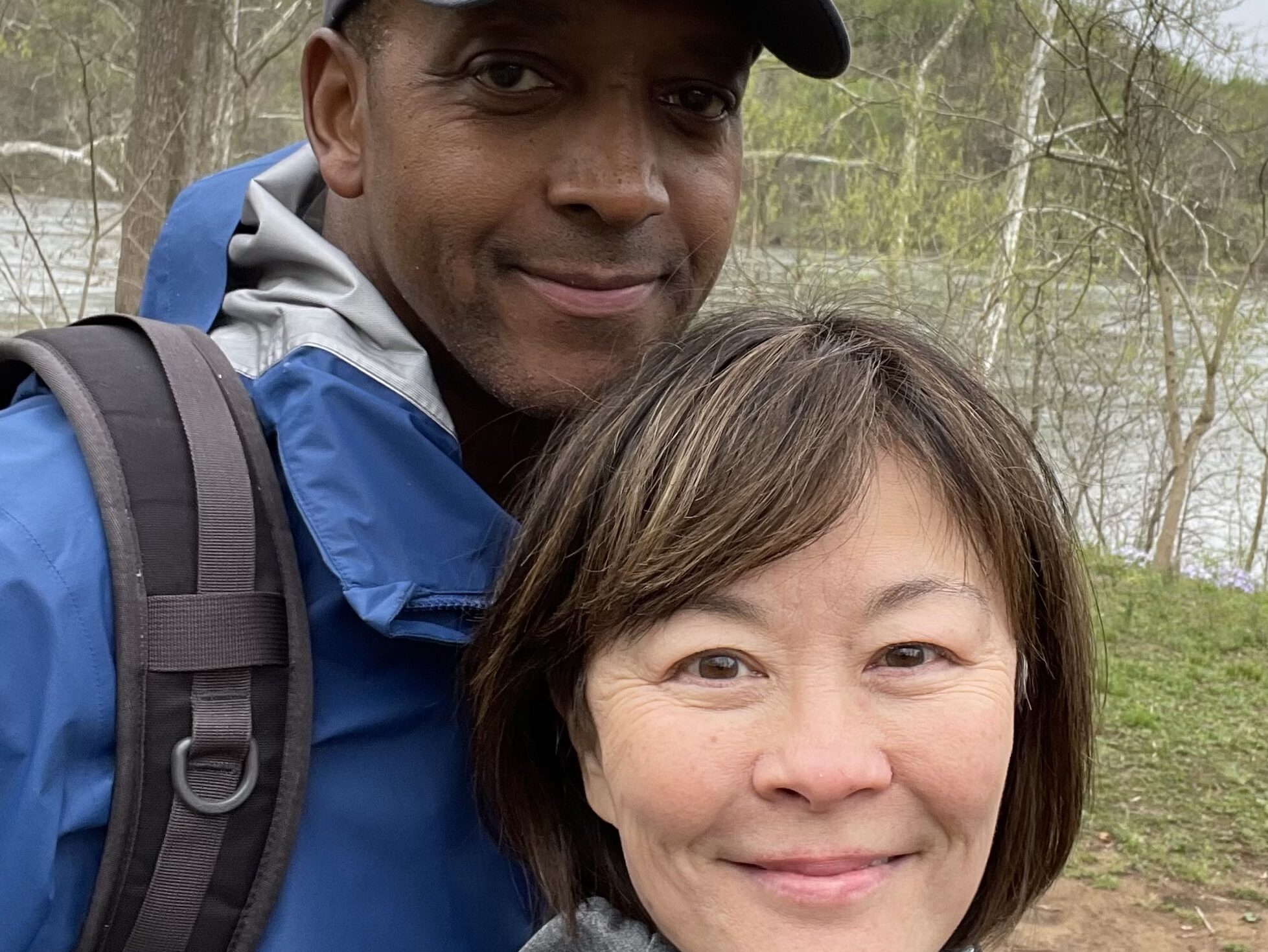
Celebrate your love for the C&O Canal by sharing your personal story about the Park. Each story will take a look at a person’s relationship with the C&O Canal. Whether an NPS ranger, a volunteer, or a visitor, everyone has a story to tell about the canal! If you want to share your story, fill out the form below, email it to us at [email protected] or post it on your social media feeds with the hashtag #MyCanalStory. We could use your story here on our website!
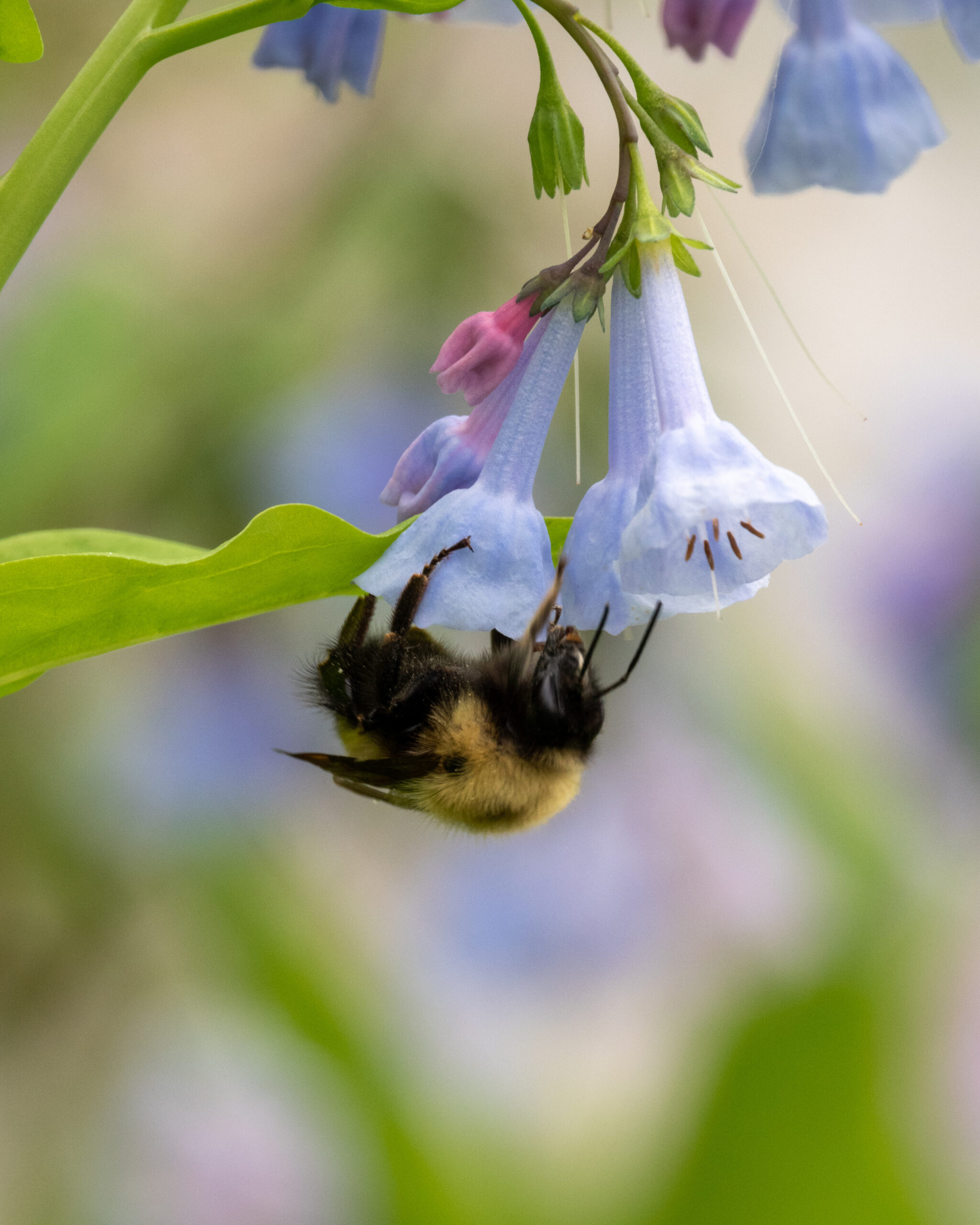
Did you know that the C&O Canal National Historical Park (NHP) is one of the most biologically diverse parks, with one of the highest concentrations of rare, threatened and endangered plant species in the eastern United States? Help us preserve and protect the larger natural ecosystem of the C&O Canal. Get involved this April by giving a gift to the C&O Canal Trust or joining us this year for our public volunteer Canal Community Days events.
Read More
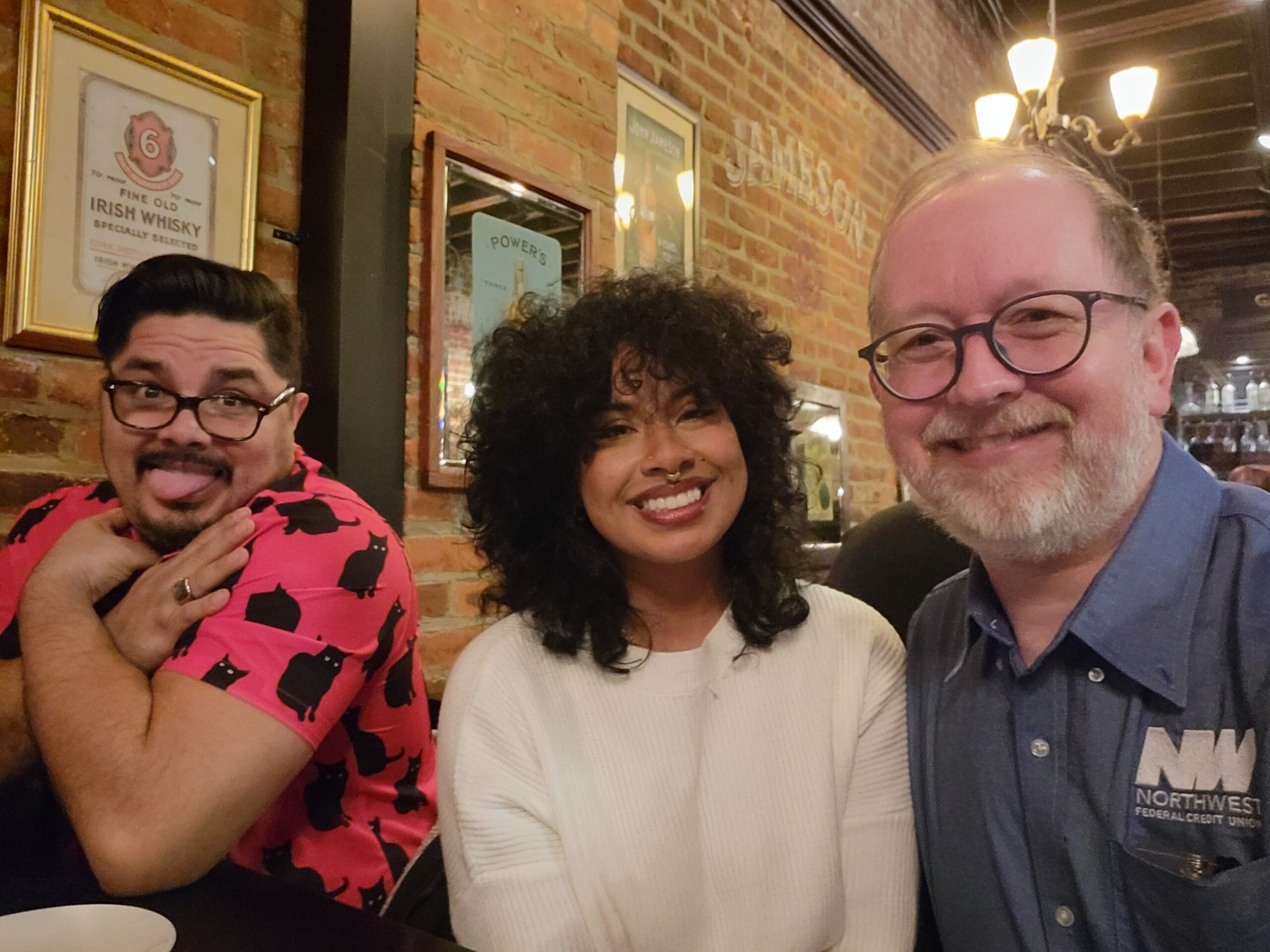
Celebrate your love for the C&O Canal by sharing your personal story about the Park. Each story will take a look at a person’s relationship with the C&O Canal. Whether an NPS ranger, a volunteer, or a visitor, everyone has a story to tell about the canal! If you want to share your story, fill out the form below, email it to us at [email protected] or post it on your social media feeds with the hashtag #MyCanalStory. We could use your story here on our website!
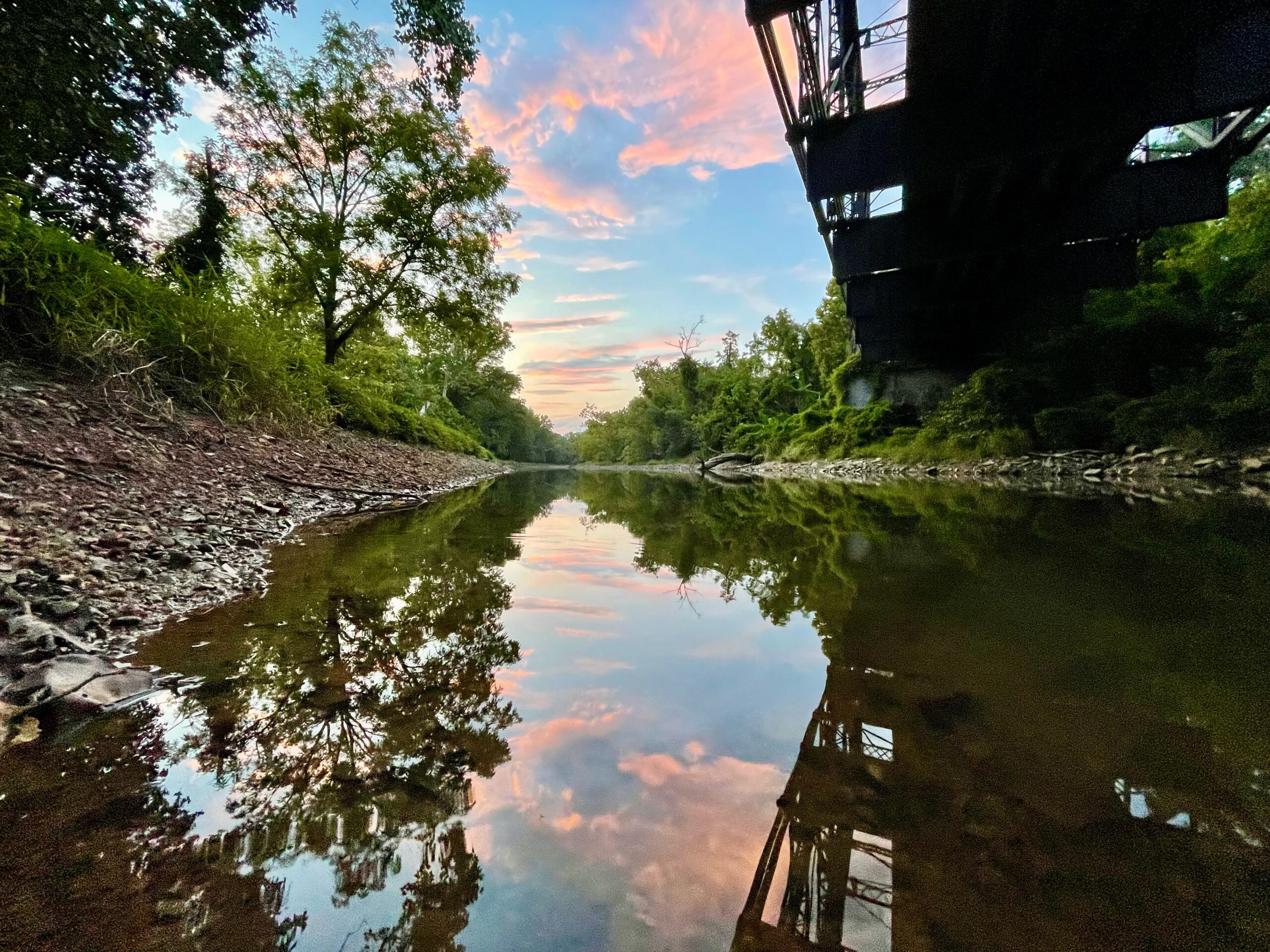
Celebrate your love for the C&O Canal by sharing your personal story about the Park. Each story will take a look at a person’s relationship with the C&O Canal. Whether an NPS ranger, a volunteer, or a visitor, everyone has a story to tell about the canal! If you want to share your story, fill out the form below, email it to us at [email protected] or post it on your social media feeds with the hashtag #MyCanalStory. We could use your story here on our website!
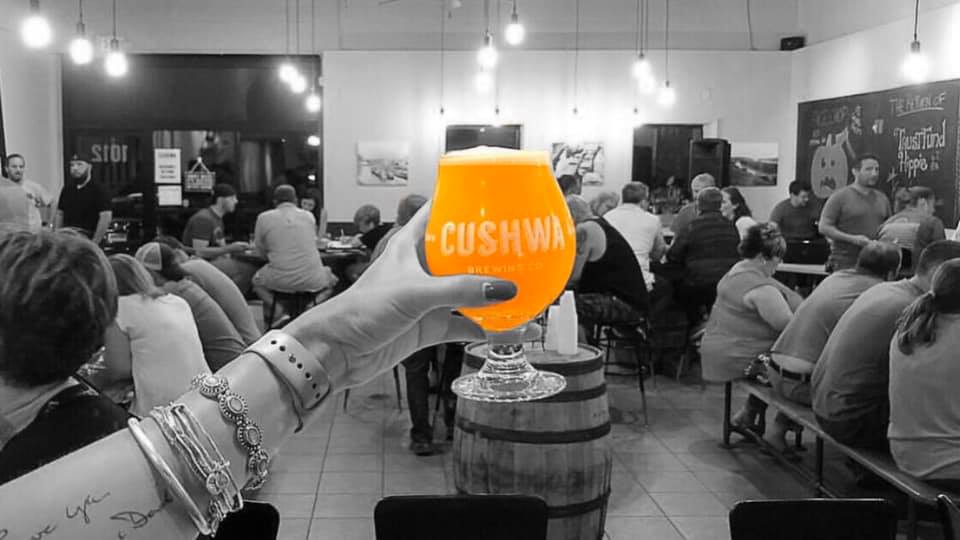
Along the 184.5 mile length of the towpath, there are many small towns and communities where visitors can explore, shop, eat and sleep. In chillier months, Park lovers can find refuge among cozy cafes or warm up with a craft beer in one of the many local breweries.
Celebrate FeBREWary this year by visiting each of these canal towns in the Canal Towns Partnership and check out these featured cafes and breweries.
19929 Fisher Avenue, Poolesville, MD 20837
4.7 miles from the towpath at Edwards Ferry
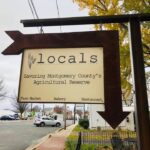
Photo from Locals (Facebook)
223 W. Potomac Street Brunswick, MD 21716
0.3 mile walk/bike from C&O Canal
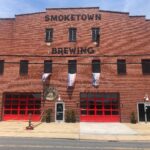
Photo by Ester Herberts
223 W. Potomac Street Brunswick, MD 21716
0.3 mile walk/bike from C&O Canal
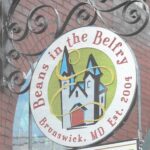
Photo from Beans in the Belfry (Facebook)
180 High St, Harpers Ferry, WV 25425
0.4 mile walk/bike from C&O Canal Lock 33
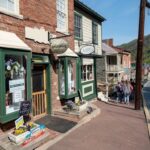
Photo by Joe Hainey
37412 Adventure Center Lane, Purcellville, VA 20132
2.5 miles from the towpath in Harpers Ferry
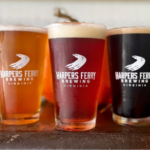
Photo from Harpers Ferry Brewing (Instagram)
1102 W. Washington Street, Bolivar, WV 25425
1.6 miles from Maryland Heights Trailhead
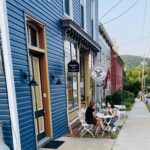
Photo from H.B. Snallygasters (Facebook)
1271 Washington Street, Bolivar, WV 25425
2.2 miles from C&O Canal towpath

Photo from Rations Roasters (Facebook)
164 Shepherd Grade Road, Shepherdstown, WV 25443
0.7 mile walk/bike from the C&O Canal
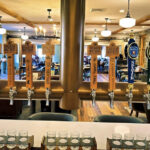
Photo by Bavarian Brothers Brewing
134 E German Street, Shepherdstown, WV 25443
1.0 mile walk/bike from the C&O Canal

Photo from Lost Dog Coffee (Facebook)
100 W German Street, Shepherdstown, WV 25443
1.0 mile walk/bike from the C&O Canal
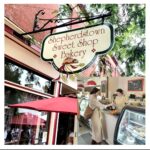
Photo from Shepherdstown Sweet Shop Bakery (Facebook)
10210 Governor Lane Blvd. #2100, Williamsport, MD 21795
2.5 mile walk/bike from C&O Canal
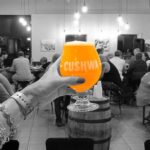
Photo by Cushwa Brewing Company
10212 Governor Lane Blvd. #1008, Williamsport, MD 21795
2.5 mile walk/bike from C&O Canal
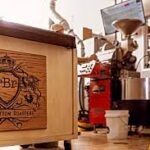
Photo from River Bottom Roasters (Facebook)
108 Greene Street, Cumberland, MD 21502
0.6 mile walk/bike from C&O Canal

Photo from Basecamp Coffee Co (Facebook)
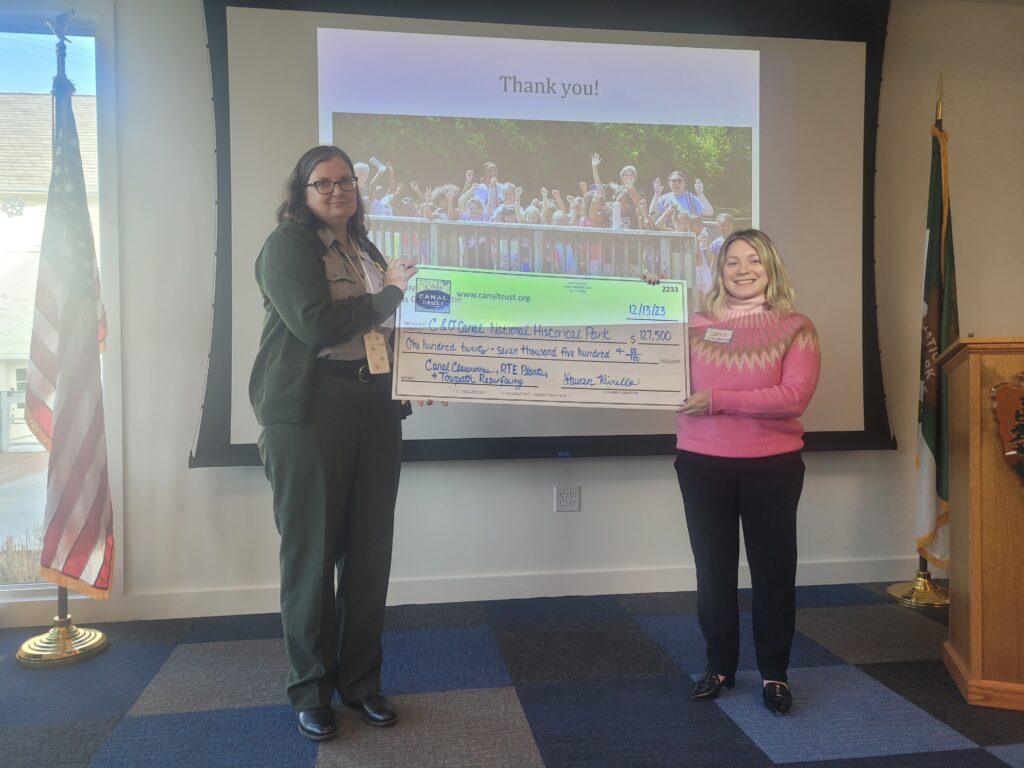
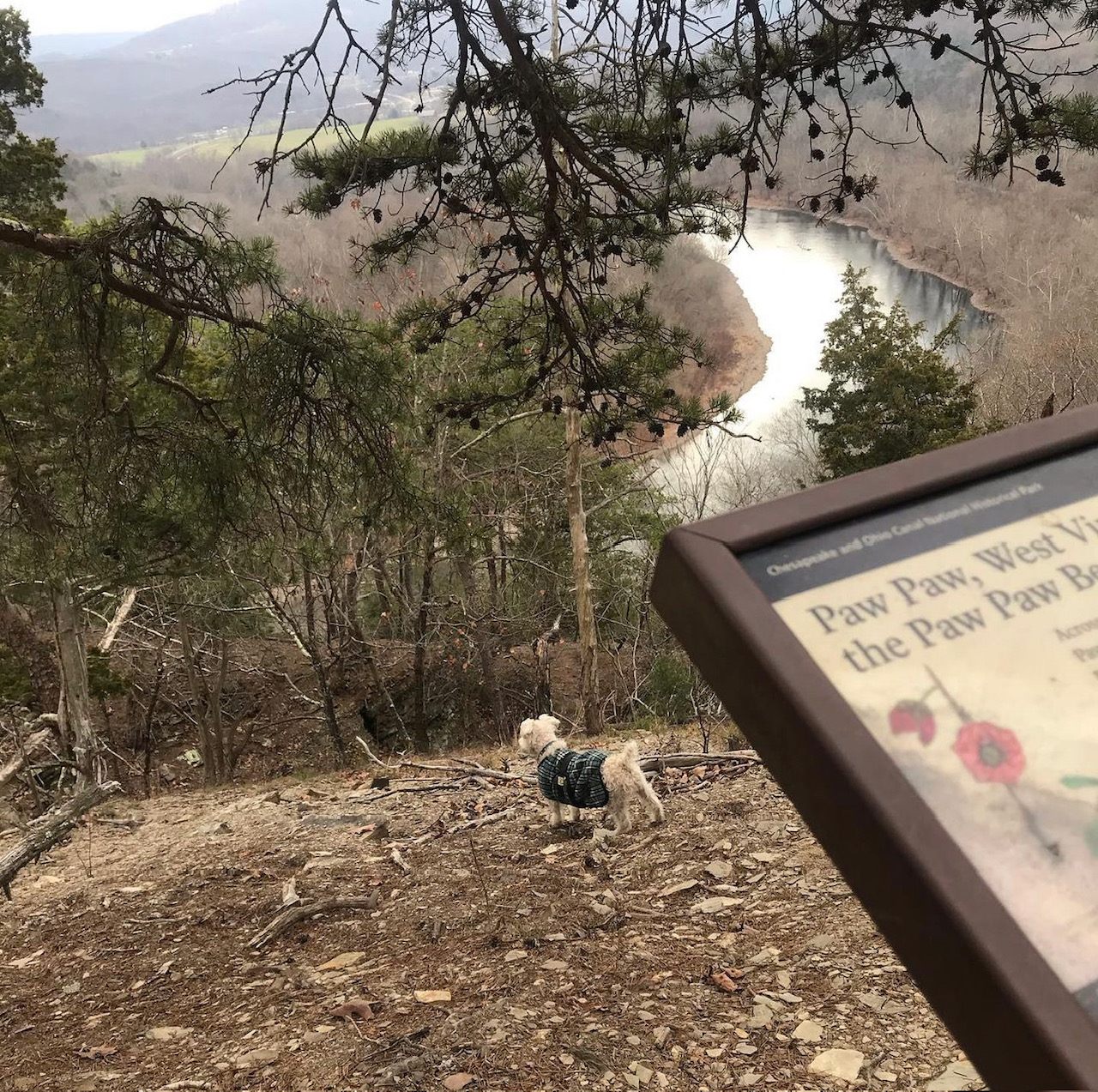
Celebrate your love for the C&O Canal by sharing your personal story about the Park. Each story will take a look at a person’s relationship with the C&O Canal. Whether an NPS ranger, a volunteer, or a visitor, everyone has a story to tell about the canal! If you want to share your story, fill out the form below, email it to us at [email protected] or post it on your social media feeds with the hashtag #MyCanalStory. We could use your story here on our website!
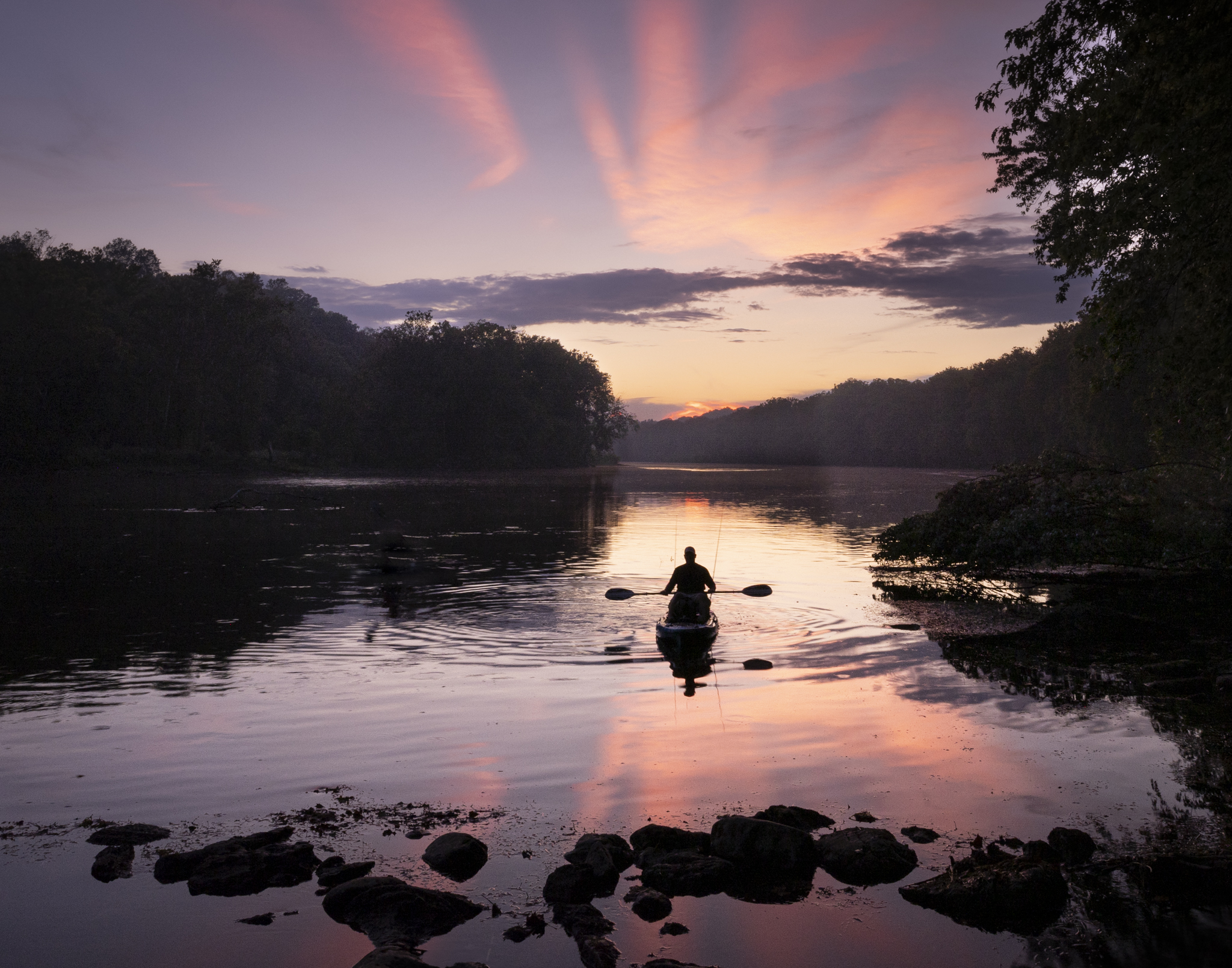
In 2023, we received many wonderful photo contest entries. From iconic nature pictures to mesmerizing sunsets to beautiful day trips along the towpath, our canal enthusiasts share gorgeous highlights of the C&O Canal National Historical Park.
These are your favorite photos—our monthly photo contest winners! Check them out below and reminisce with us about 2023.
Click the picture to view full size.
Submit your photos of the Park to be considered for our monthly photo contest here.
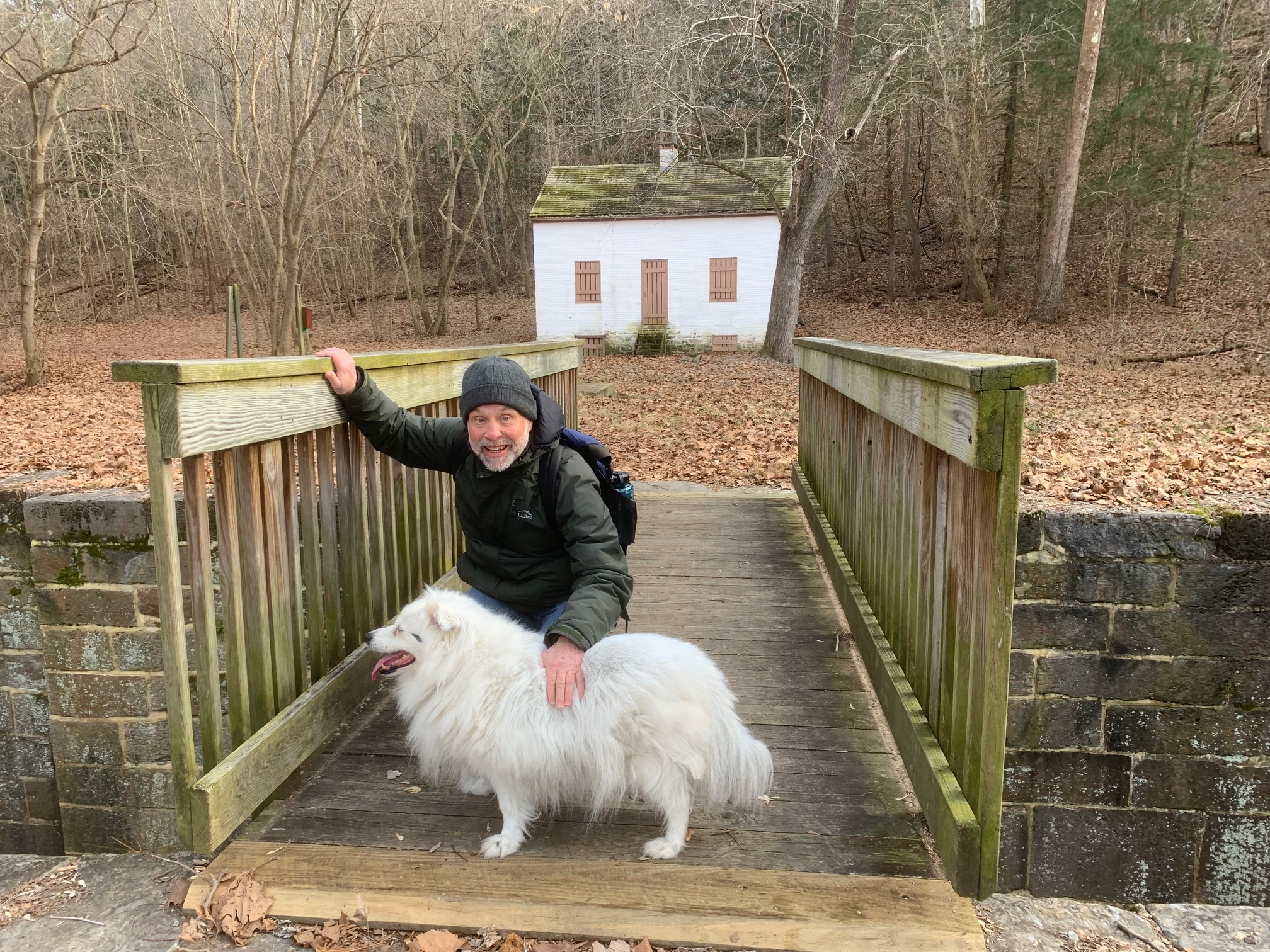
Celebrate your love for the C&O Canal by sharing your personal story about the Park. Each story will take a look at a person’s relationship with the C&O Canal. Whether an NPS ranger, a volunteer, or a visitor, everyone has a story to tell about the canal! If you want to share your story, fill out the form below, email it to us at [email protected] or post it on your social media feeds with the hashtag #MyCanalStory. We could use your story here on our website!
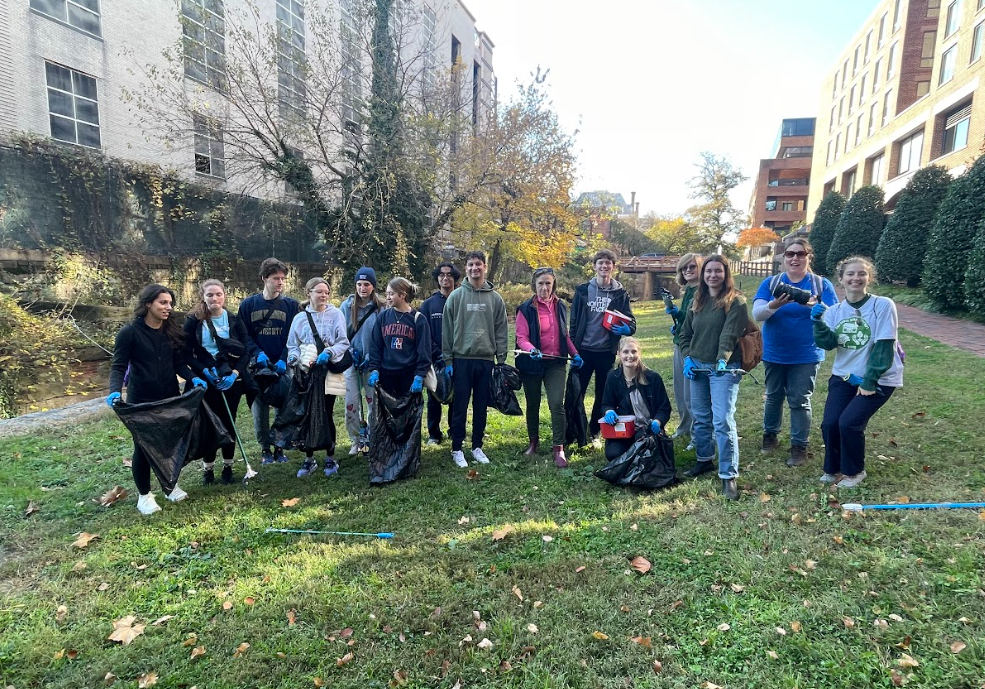
The C&O Canal Trust welcomed more than 70 individuals to the C&O Canal National Historical Park (NHP) in October for volunteer service and educational programs.
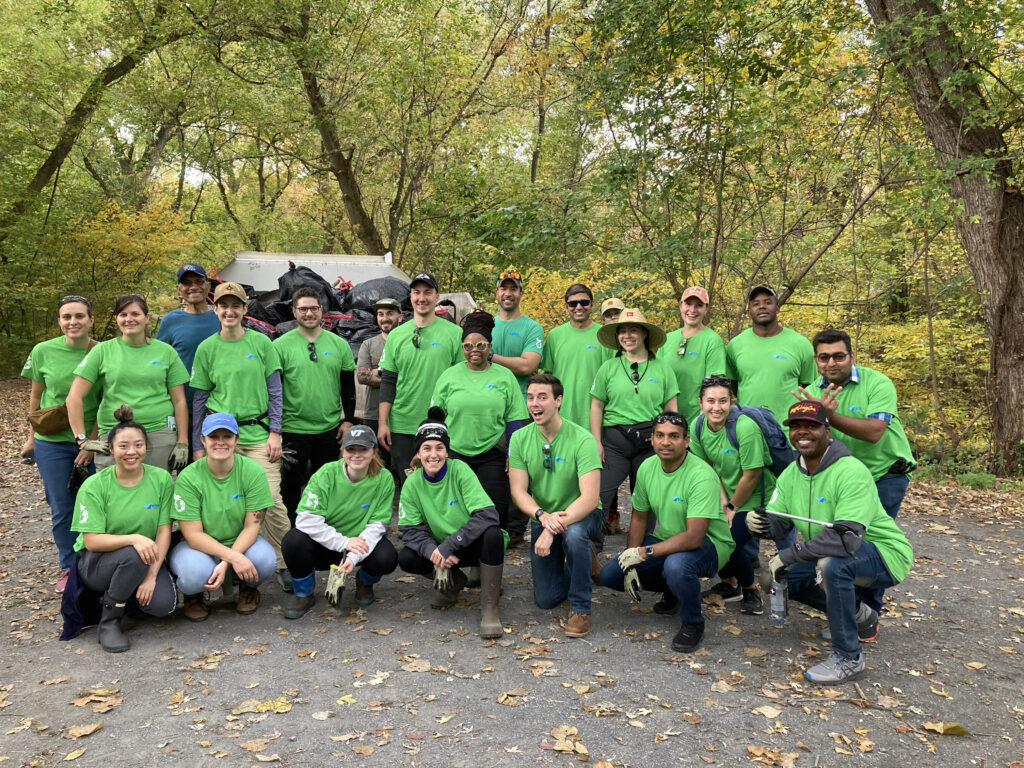
Kite Pharma volunteers at Weverton with the C&O Canal Trust. Photo by Trust Staff.
Groups with the Washington County Division of Stormwater Management and Kite Pharma worked with the Trust to collectively remove nearly 2,000 pounds of trash from Weverton between mile markers 57 and 59 during two volunteer events. Trust volunteers responded to an immediate need for trash cleanup in the area, providing vital support to the Park and visitors. Along with general trash, the groups removed items like a frying pan, fishing nets, metal folding chairs, and a card table. Volunteers with Shepherd University helped remove over 200 pounds of trash from Lock 38, another busy access point in Washington County. Read More

Each adult bat can eat up to 1,000 insects per hour. That is over $53 million of free pest control they provide and with the agricultural benefit of being pesticide free.
There are 10 confirmed species of bats within the C&O Canal NHP. Eight of which are hibernating bats.
Bats aid in pollination both by transferring pollen when drinking nectar from flowers but also through seed spreading.
There are other mammals that have the ability to glide, or fall with style. Though bats are the only mammal that have the true ability to fly.
While many believe bats to have poor eyesight and rely on echolocation, bats’ vision is actually pretty comparable to human sight. As well not all bats can echolocate, only 70% have the capability.
Insectivore as the name suggests eat insects. While other species of bat can be carnivores or frugivores. Carnivorous bats eat meat like frogs, fish and birds. Frugivores eat fruit and other vegetation like fig, mango and agave.
Eight different species of bat now call the Indigo Tunnel “home,” including the Maryland state endangered small-footed myotis and the federally endangered Indiana bat. The Indigo Tunnel, located in Allegany County, has been identified by Maryland Department of Natural Resources as one of the largest bat hibernacula in the state. To protect the hibernating bats and their home, the National Park Service has placed metal gates at the portals of the tunnel. (pictured below)
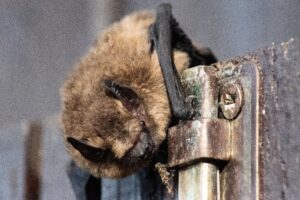
Photo by Maximillian Ruther
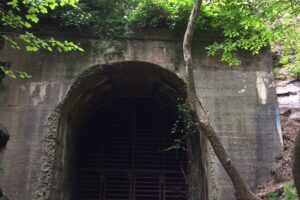
Photo by Nanette Nyce
Information for this post was sourced from the NPS and BatWeek.org
Top image by HitchHike via Pexels
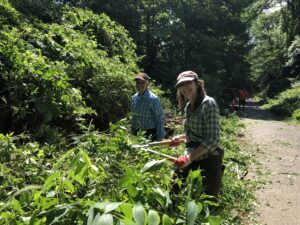 Photo by Trust Staff
Photo by Trust Staff
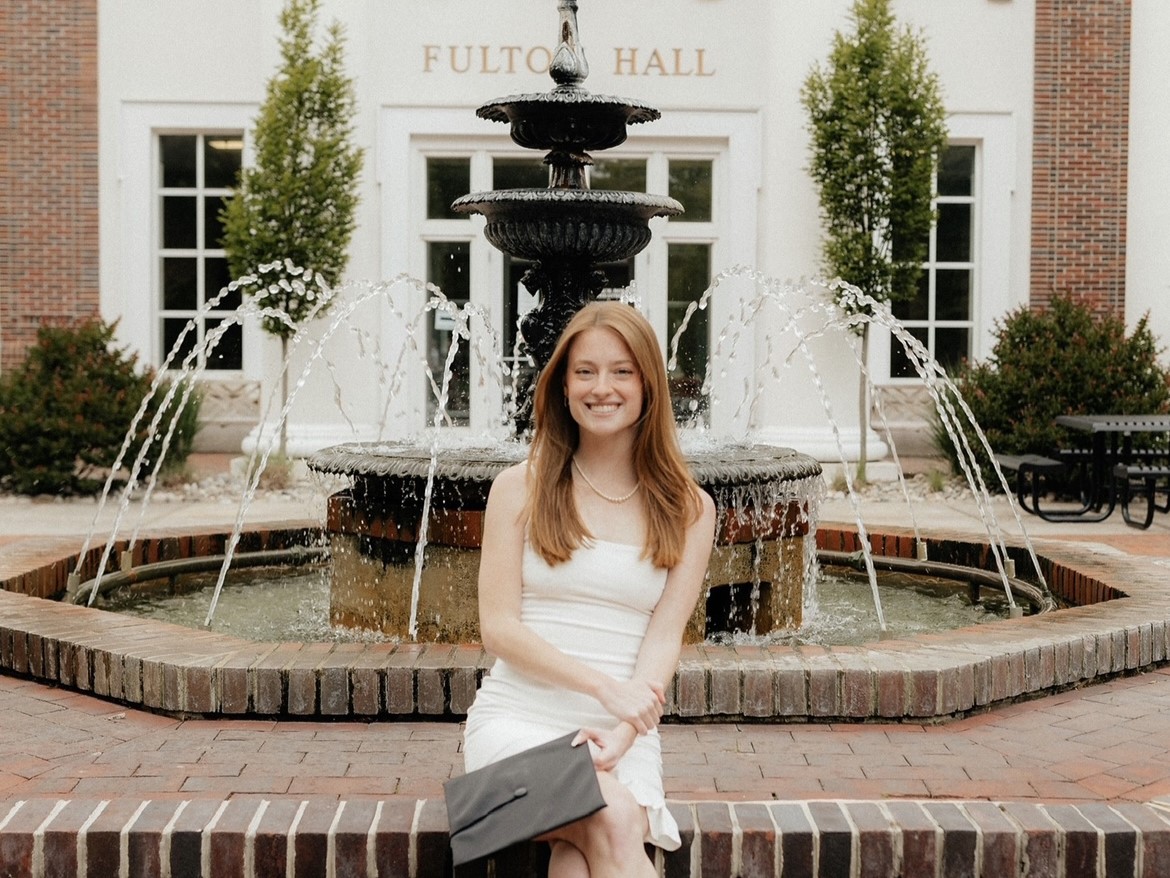
Celebrate your love for the C&O Canal by sharing your personal story about the Park. Each story will take a look at a person’s relationship with the C&O Canal. Whether an NPS ranger, a volunteer, or a visitor, everyone has a story to tell about the canal! If you want to share your story, fill out the form below, email it to us at [email protected] or post it on your social media feeds with the hashtag #MyCanalStory. We could use your story here on our website!
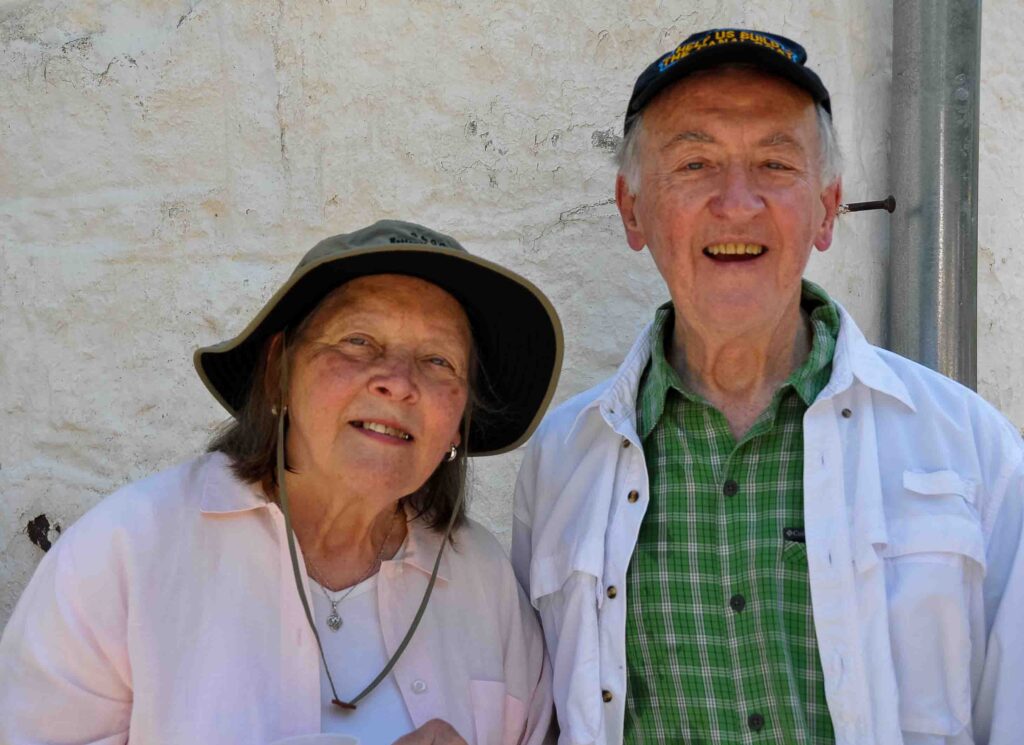
Photo by Francis Grant-Suttie
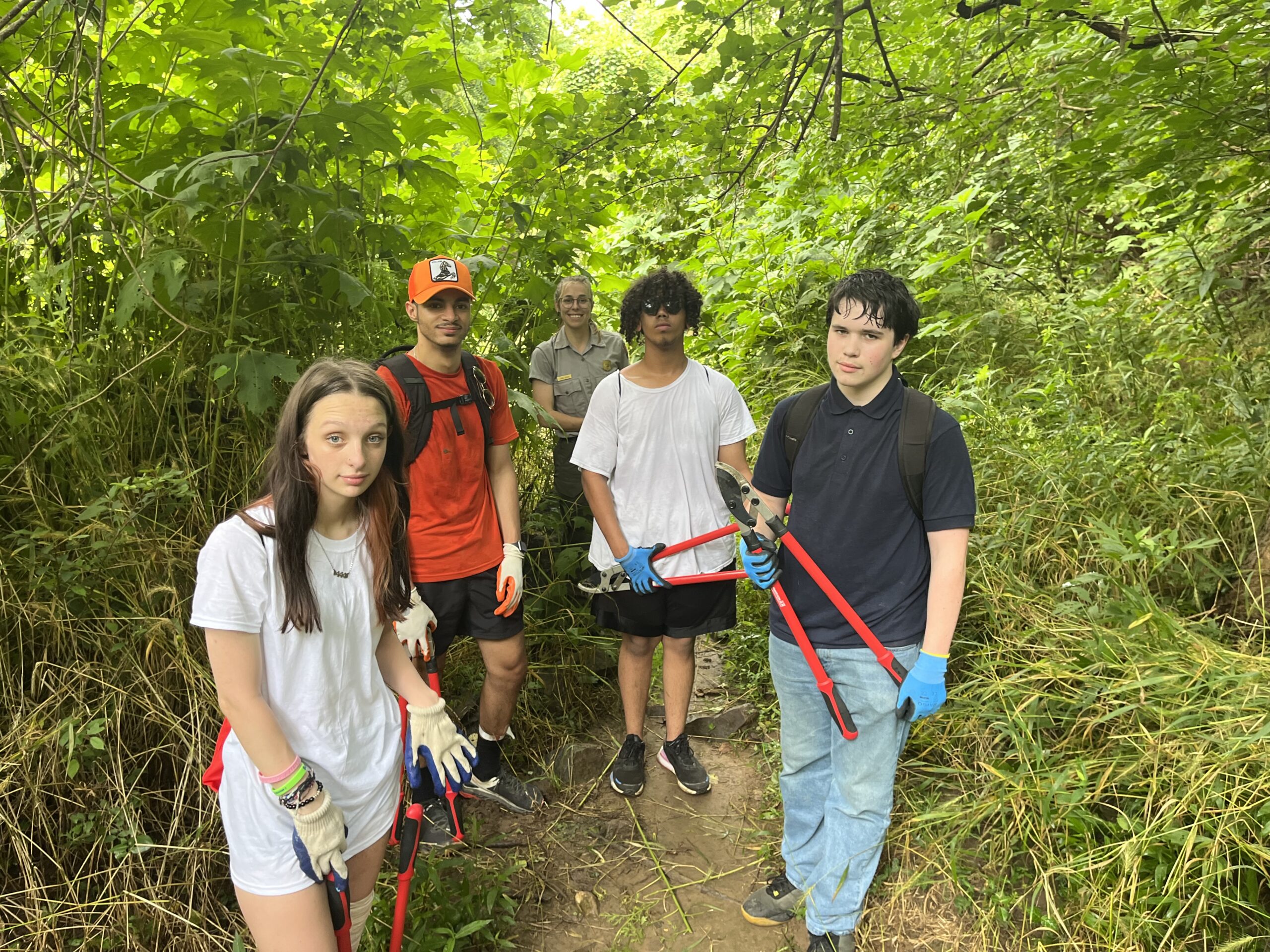
Celebrate your love for the C&O Canal by sharing your personal story about the Park. Each story will take a look at a person’s relationship with the C&O Canal. Whether an NPS ranger, a volunteer, or a visitor, everyone has a story to tell about the canal! If you want to share your story, fill out the form below, email it to us at [email protected] or post it on your social media feeds with the hashtag #MyCanalStory. We could use your story here on our website!
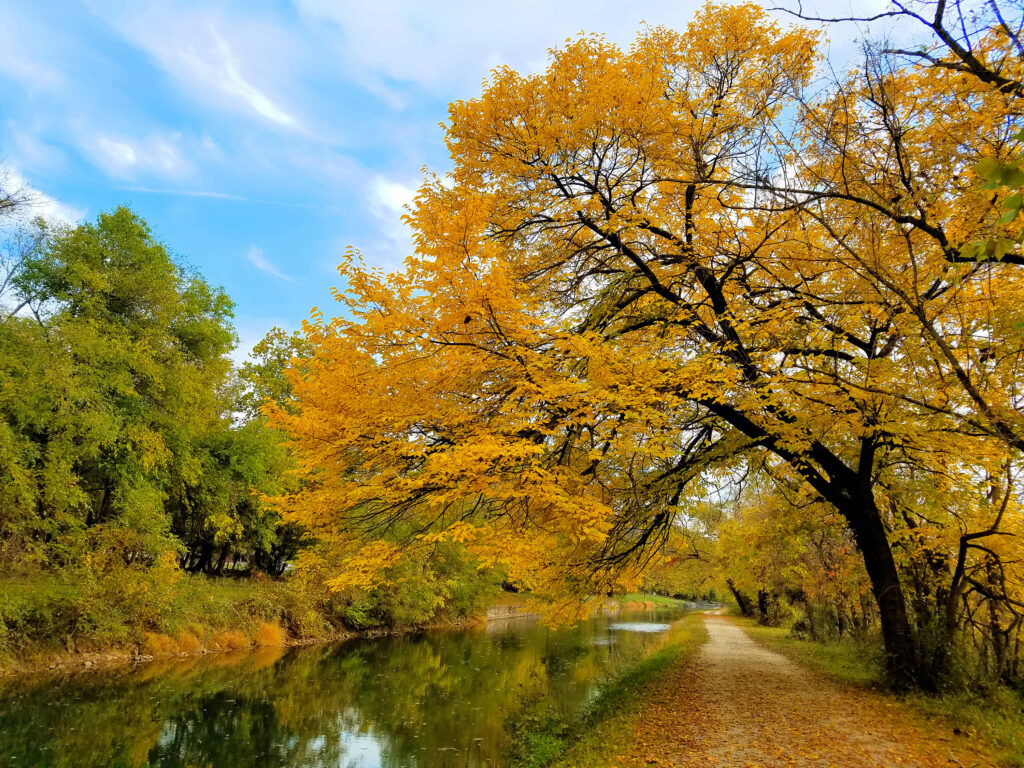
Canal Gold by MJ Clingan
Nestled along the Potomac River, the C&O Canal National Historical Park (NHP) is the perfect place to witness the beauty of nature’s transition into fall. As summer’s warmth gradually gives way to cooler breezes and the days grow shorter, the lush greenery that defines the landscape of the Park begins its shift into a breathtaking display of autumn colors. Once adorned in verdant hues, the trees that line the canal prepare to don their seasonal attire of gold, red, and orange. According to the Farmer’s Almanac’s 2023 fall leaves and peak color forecast, inland parts of Maryland will enjoy peak fall color from October 12-28.
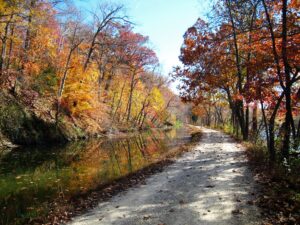
Autumn on the Towpath at Milepost 20 by Keld Wichmann Moeller
Predicting the timing and intensity of fall foliage can be like forecasting the weather – it’s a mix of science and art. Several key factors include rainfall, temperature, daylight duration, and the mix of tree species in the Park. As the days shorten and temperatures begin to cool, the trees respond by producing vibrant pigments that create the iconic reds, oranges, and yellows that define the fall season. A gradual transition from summer to fall, with moderate temperatures and adequate rainfall, yields more vibrant and prolonged displays. A sudden frost or heavy rain, on the other hand, can result in leaves dropping prematurely, impacting the overall experience.
If you’re planning to witness the fall color extravaganza in the C&O Canal NHP, here are a few tips to make the most of your experience:
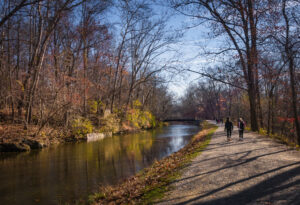
Autumn Morning on the Canal by Suzanne Lugerner
As autumn unfolds in the Park, it brings with it the promise of a breathtaking symphony of colors. While we can’t predict nature’s exact timing and intensity, the conditions seem favorable for a memorable fall foliage season in 2023. So, mark your calendars, prepare your camera, and embark on a journey to witness the splendid transformation that only nature can orchestrate.
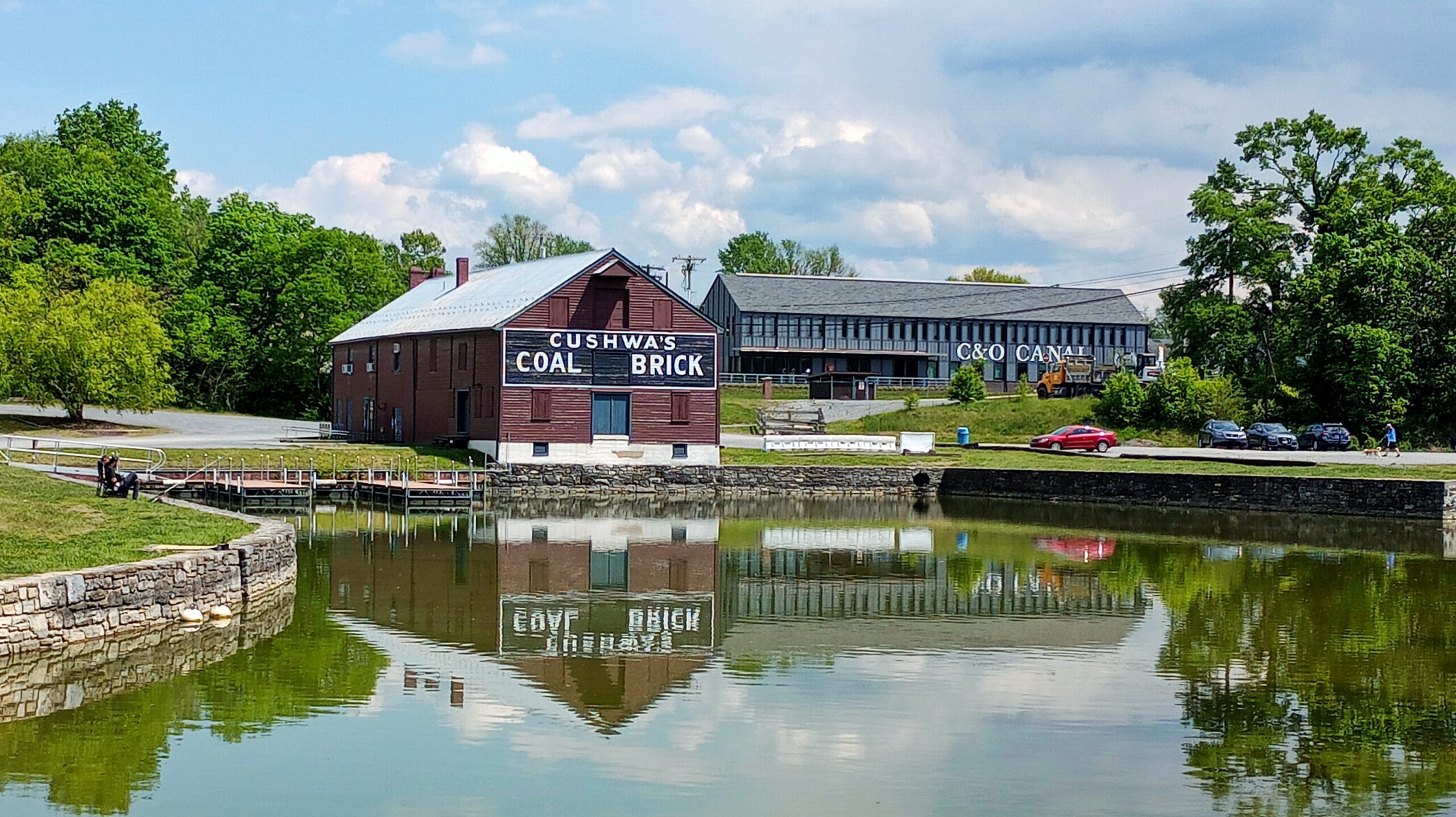

Image Credit: Jane Schmidt

Celebrate your love for the C&O Canal by sharing your personal story about the Park. Each story will take a look at a person’s relationship with the C&O Canal. Whether an NPS ranger, a volunteer, or a visitor, everyone has a story to tell about the canal! If you want to share your story, fill out the form below, email it to us at [email protected] or post it on your social media feeds with the hashtag #MyCanalStory. We could use your story here on our website!
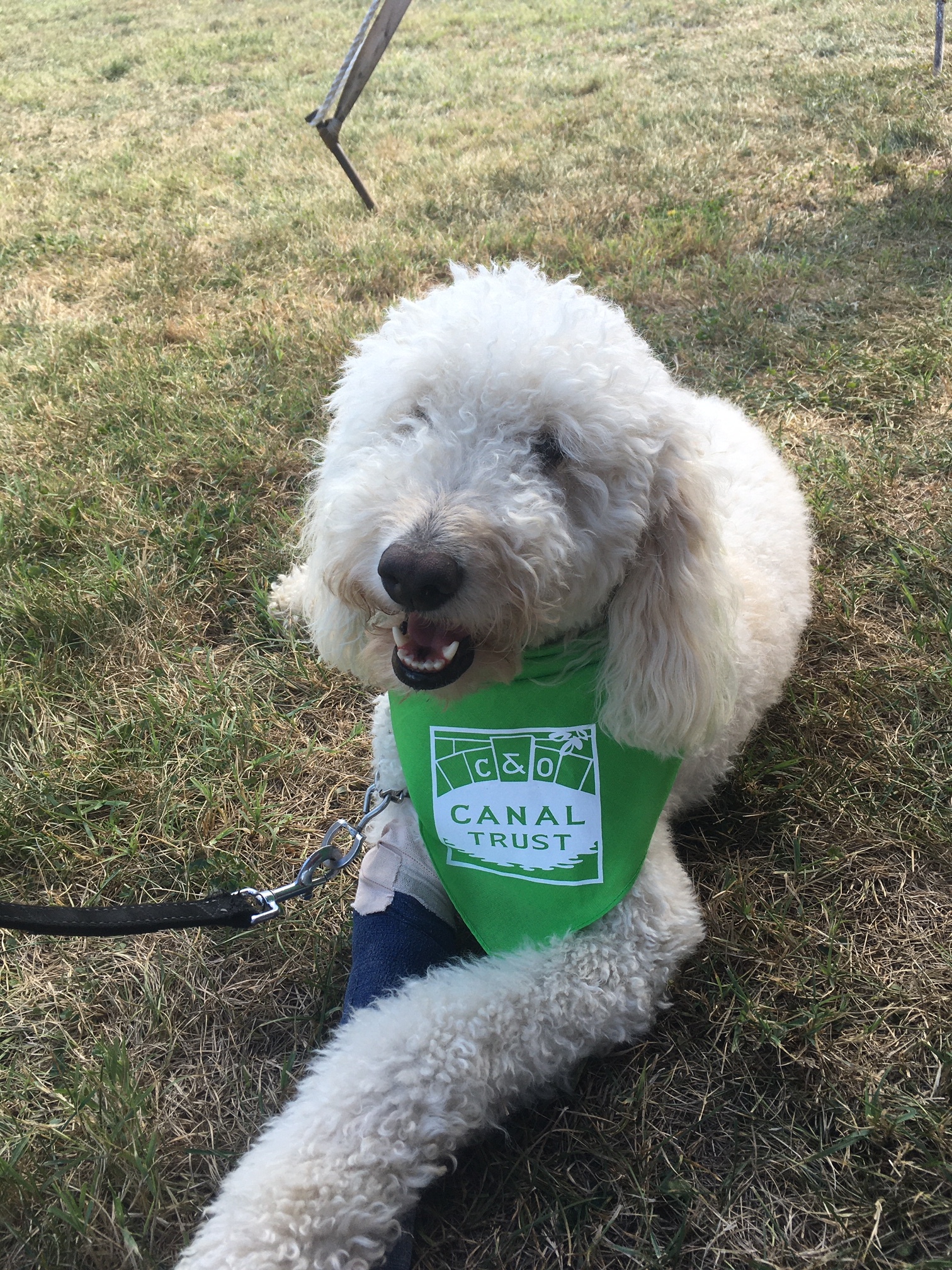
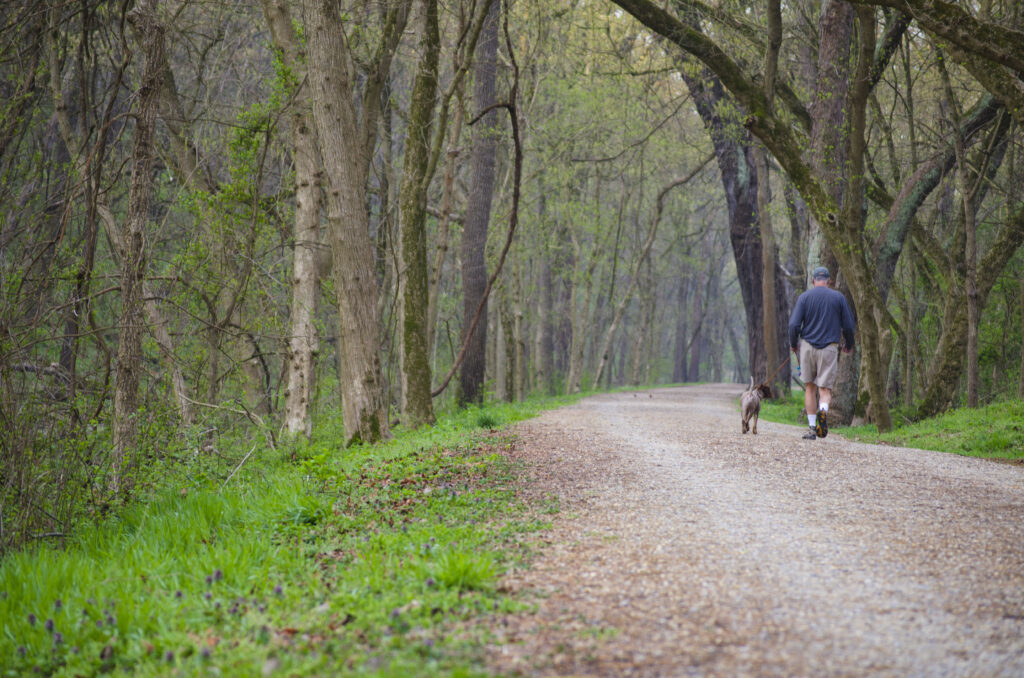
Photo by Trust Staff
The C&O Canal National Historical Park (NHP) is filled with natural beauty, rich history, and recreational opportunities. Many visitors enjoy sharing the Park with their four-legged companions. However, ensuring a positive experience requires proper planning in order to recreate responsibly. The National Park Service asks that all visitors with pets remember to B.A.R.K.:
Bag your pet’s poop
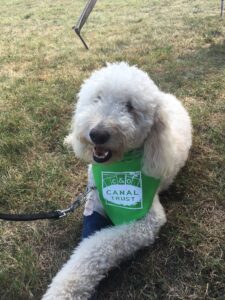
Tater the Doodle by Callie Fishburn
Always keep your pet on a leash
Respect all animals
Know the rules
These regulations and laws exist to keep pets, visitors, and park resources safe. There are no exceptions to the regulations for carried pets (in arms, carriers, strollers, backpacks, etc.) in restricted areas of the park. For more information, please consult the Superintendent’s Compendium.
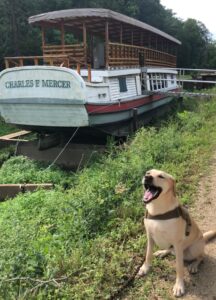
Dog and Charles F Mercer at Great Falls by Marc Llacuna
Please be mindful of weather conditions when bringing your pet to the park. Extreme temperatures, both hot and cold, can sometimes be dangerous to pets. Water fountains are available at some locations in the Park, but visitors should plan ahead and bring water for their pets.
Service Animals
Qualified service animals assisting visitors with disabilities are permitted throughout the Park and in all Park facilities. Service animals must be on a leash and picked up after.
Recreating responsibly with your dog in the C&O Canal NHP is not only about following Park rules but also about fostering a sense of stewardship for the natural and cultural resources. By knowing the regulations, keeping your dog on a leash, practicing good waste management, staying on designated trails, and being considerate of wildlife and other visitors, you can ensure a positive experience while preserving the Park’s integrity. Let’s cherish this remarkable resource and create lasting memories with our furry friends while following B.A.R.K. principles. By embracing these principles, we can continue to enjoy the beauty of the C&O Canal NHP for generations to come.

Thank you for volunteering with the C&O Canal Trust for the “Dog Days of Summer” music fest on Saturday, July 22nd presented by Cushwa Brewing and Interchange Tiki Bar & Brewery in conjunction with the C&O Canal Trust. The Trust will receive a portion of the proceeds to help our mission to preserve and protect the Historic C&O Canal National Historic Park.


Photo by Mark Cruz
After a day exploring the wonders of the C&O Canal National Historical Park (NHP), there’s nothing quite as satisfying as taking a break in a Canal Town. These towns, rich with history and small-town charm, provide a welcoming respite for weary adventurers. While meandering through the streets of most canal towns or just beyond, you’re bound to stumble upon a unique ice cream shop promising sweet treats that tantalize the taste buds. These shops offer a mouthwatering array of flavors, ranging from classic favorites to inventive creations.
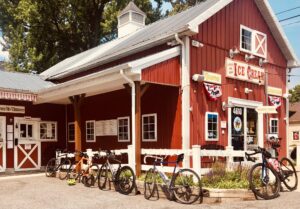
Photo courtesy of The Little Red Barn
Little Red Barn Ice Cream Cafe
4610 Lander Road, Jefferson, MD
Closest Canal Town: Point of Rocks
Located in a restored, hundred-year-old barn, the Little Red Barn Ice Cream Cafe is a fun spot to enjoy frozen treats. It also offers sandwiches, soups, salads, and expresso-based drinks. The options are limitless, with indoor dining, patio space, and a walk-up window with carry-out. The Little Red Barn offers a large selection of ice cream flavors, milkshakes, and sundaes made with Hershey’s ice cream. Follow their Facebook page for special flavors and more.
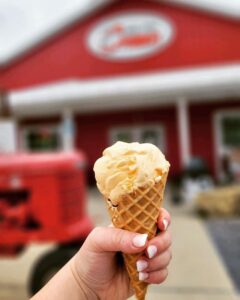
Photo courtesy of Rocky Point Creamery
Rocky Point Creamery
4323 Tuscarora Road, Tuscarora, MD
Closest Canal Town: Point of Rocks, MD
Rocky Point Creamery is a classic farm-to-cone style creamery located a little over a mile from the towpath in Point of Rocks. Part of Maryland’s Best Ice Cream Trail, the creamery rotates over 80 flavors of ice cream weekly and offers specialty sundaes and shakes. Be sure to visit their tractor-style playground, sunflower field in July and August, and events like food trucks and goat yoga. Weekly flavors and events are posted on their Facebook page.
A La Mode Cafe
113 Potomac Street, Harpers Ferry, WV
Canal Town: Harpers Ferry/Bolivar
A La Mode Cafe offers tasty desserts, including ice cream treats like milkshakes and sundaes. Hand-dipped ice cream is from Kawartha Dairy, and there are soft-serve options as well. The menu also includes a few breakfast and lunch items.
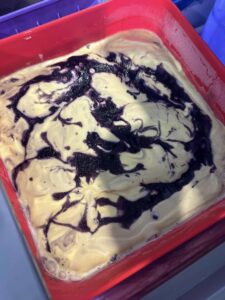
Photo courtesy of Battle Grounds Bakery & Coffee
Battle Grounds Bakery & Coffee
180 High Street, Harpers Ferry, WV
Canal Town: Harpers Ferry/Bolivar
Situated right in the middle of the historic lower town of Harpers Ferry, Battle Grounds Bakery & Coffee offers breakfast and pastries, salad and sandwiches, specialty coffees, cookies, and delicious frozen custard flavors. Follow them on Facebook.
Cannonball Deli
125-129 High Street, Harpers Ferry, WV
Canal Town: Harpers Ferry/Bolivar
Just a short walk across the Potomac River into Harpers Ferry, the Cannonball Deli is one of several walk-up ice cream spots on Potomac Street. It serves Hershey’s ice cream. The deli has indoor and outdoor seating, a tasty ice cream menu, and offers other menu items like burgers, pizza, salads, and burritos.
Creamy Creations
173 Potomac Street, Harpers Ferry, WV
Canal Town: Harpers Ferry/Bolivar
Just a short walk across the Potomac River into Harpers Ferry, Creamy Creations is another walk-up ice cream spot on Potomac Street, opposite the train station. You’ll find a variety of fun, unique hand-dipped flavors, along with traditional flavors and plenty of toppings to choose from.
Harpers Ferry Ice Cream Shoppe
408 Alstadts Hill Road, Harpers Ferry, WV
Canal Town: Harpers Ferry/Bolivar
The Harpers Ferry Ice Cream Shoppe features 16 flavors from local creamery Garber’s Ice Cream in Winchester, Virginia. The menu includes cones, cups, milkshakes, cookie sandwiches, and sundaes.

Photo courtesy of Amy & Alex’s Homemade Ice Cream and Coffee
Amy & Alex’s Homemade Ice Cream and Coffee
207 S Princess Street, Suite 2, Shepherdstown, WV
Canal Town: Shepherdstown, WV
Amy & Alex’s Homemade Ice Cream and Coffee opened in May of 2023, focusing on clean ingredients, meaning no artificial flavors and no artificial ingredients. Most of their ice cream add-ins are organic, and they offer a variety of traditional flavors as well as more unique flavors, like Honey Raspberry Blueberry Swirl, Mango Dragonfruit, and Coffee Crunch Bar. They always have two or three dairy-free coconut milk ice creams as well. Follow them on Instagram.
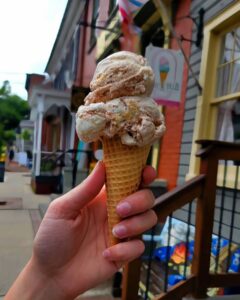
Photo courtesy of Rock Hill Creamery
Rock Hill Creamery
111 West German Street, Shepherdstown, WV
Canal Town: Shepherdstown, WV
Rock Hill Creamery, located in the heart of Shepherdstown, West Va., features ice cream made right in the shop using only milk, sugar, and heavy cream as the base. The menu features a variety of traditional and not-so-traditional ice cream flavors, as well as vegan sorbet. Flavors like Keylime Pie, Lavender Honey, Vanilla Chip, Zebra Cake, and Better Brownie Batter are sure to tempt your tastebuds!

Photo courtesy of Deliteful Dairy
Deliteful Dairy
16230 Long Delite Lane, Williamsport, MD
Canal Town: Williamsport, MD
Located close to C&O Canal access points at Cushwa Basin and McMahons Mill, Deliteful Dairy offers high-quality, grass-fed dairy products, including ice cream, butter artisanal cheeses, and farm-fresh craft milk selections. This seventh-generational farm is part of Maryland’s Best Ice Cream Trail and offers a variety of tasty ice cream treats. Visit them on Facebook for events and specials.

Photo courtesy of Scoop-A-Licious & More
Scoop-A-Licious & More
16904 Virginia Avenue, Williamsport, MD
Canal Town: Williamsport, MD
Scoop-A-Licious & More offers batch-churned ice cream from Windy Knoll Farm & soft-serve ice cream. They also have a wide variety of sundaes, milkshakes, snow cones, and other delicious ice cream treats.
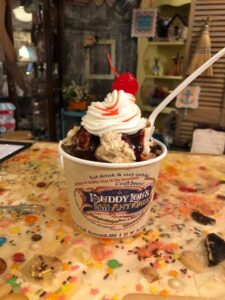
Photo courtesy of BuddyLou’s Eats Drinks & Antiques
BuddyLou’s Eats Drinks & Antiques
11 East Main Street, Hancock, MD
Canal Town: Hancock, MD
Just steps from the C&O Canal, Buddy Lou’s offers exceptional dining, unique artisan gifts, vintage treasures, and just plain fun! Their ice cream menu offers soft serve and Flavor Burst selections, with a multitude of topping choices. You can also get sundaes, milkshakes, and other ice cream treats.
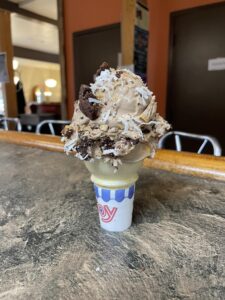
Photo courtesy of Queen City Creamery
Queen City Creamery
138 Baltimore Street, Cumberland, MD
Canal Town: Cumberland, MD
Queen City Creamy makes homemade frozen custard, sorbet, and frozen treats daily. There’s a Flavor of the Day Custard, a Flavor of the Week Sorbet, and a Sundae of the Week. The menu includes ice cream floats and even ice cream cakes, plus more! Stop in and enjoy flavors like Lemon Blueberry, Salted Caramel Cashew, and Caramel Old Bay. They were recently voted one of the best frozen custard places in the United States. Follow them on Facebook.
European Desserts and More
17 Howard Street, Cumberland, MD
Canal Town: Cumberland
Located just steps off the towpath, less than 500 ft from the end of the C&O Canal and the start of the Great Allegheny Passage trail, European Desserts and More is one of the shops at Canal Place. The shop offers six flavors of ice cream, including black raspberry and cookies & crème. Its specialty is traditional handmade desserts, like baklava, bee sting cake, and filo pastries. Follow the towpath south, and you will find a green field to eat your ice cream or other treats and view “The Cumberland,” a full-scale C&O Canal boat replica. This is the perfect place to treat yourself after your journey or fuel up for the start of your trip.
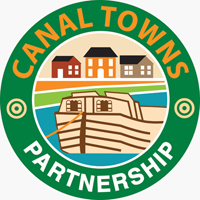 The next time you find yourself visiting the C&O Canal NHP, enjoy the simple pleasures of an ice cream treat in a canal town. We hope it will be the perfect ending to a great day! Click here for more information about the Canal Towns Partnership.
The next time you find yourself visiting the C&O Canal NHP, enjoy the simple pleasures of an ice cream treat in a canal town. We hope it will be the perfect ending to a great day! Click here for more information about the Canal Towns Partnership.
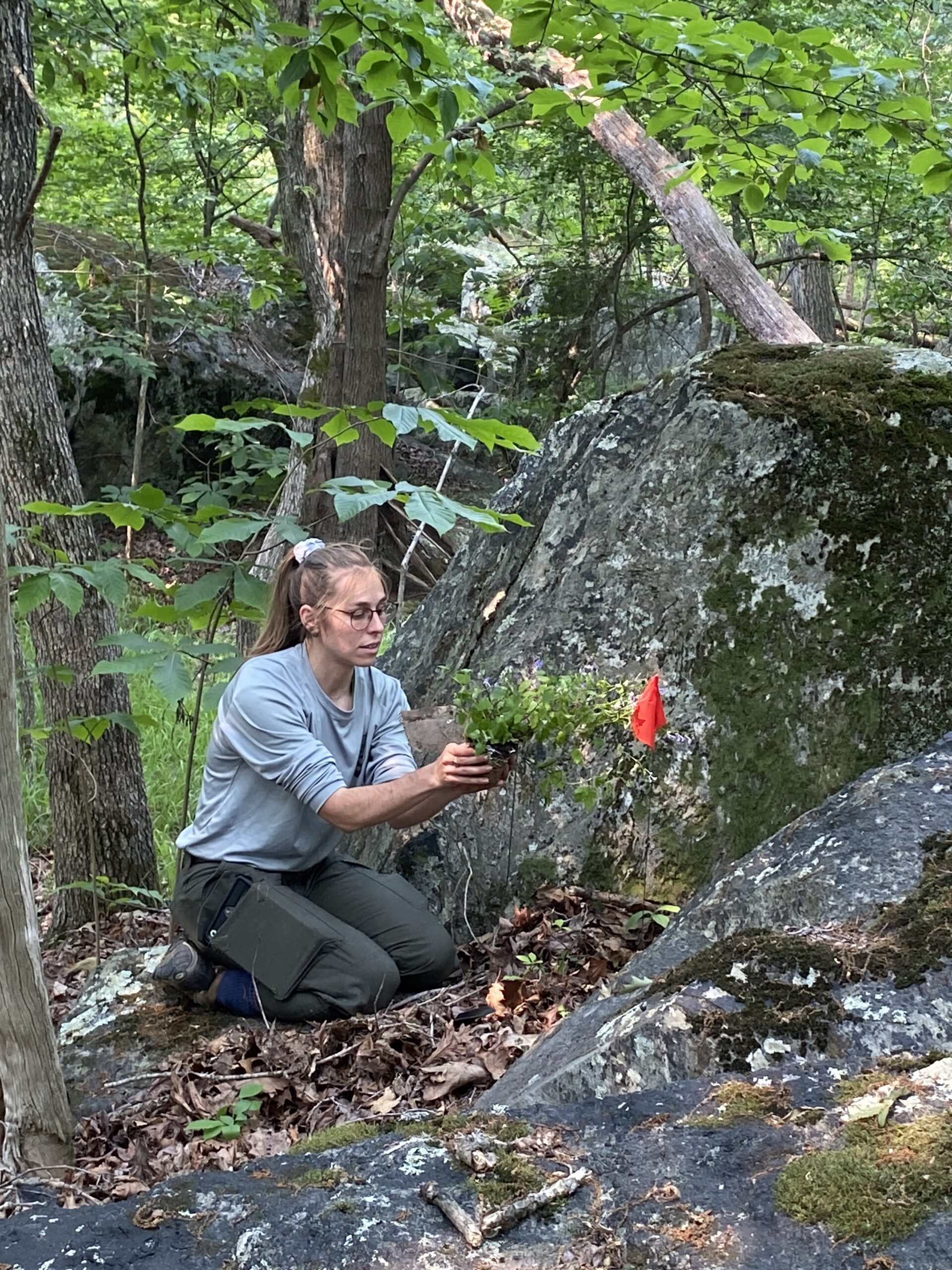
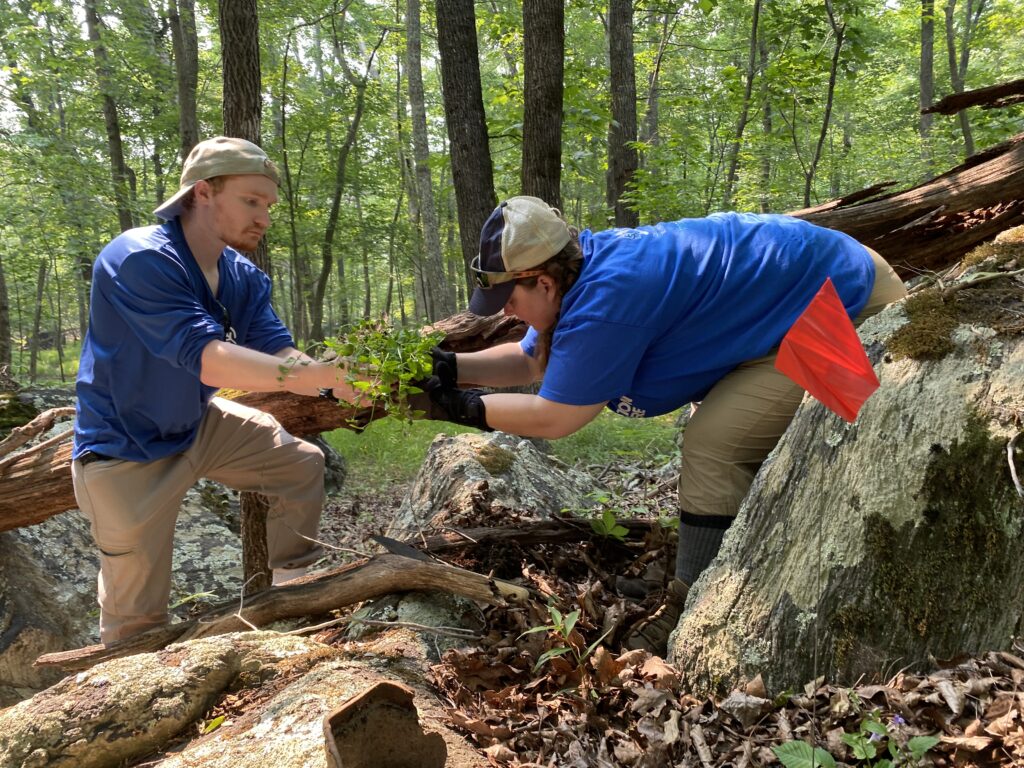
Student Conservation Association interns planting smooth rock skullcap at a site in the Potomac Gorge area. Photo by C&O Canal NHP/NPS.